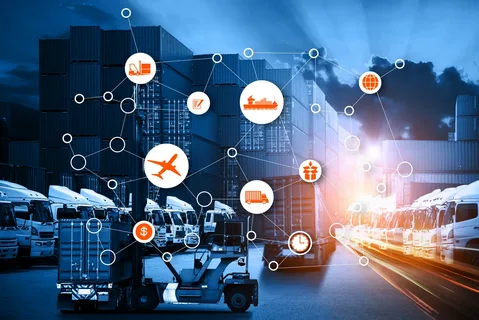The most crucial aspect of any business nowadays is leveraging technology to maximize efficiency in transportation and logistics. It can take time to keep up with the competition and ensure optimal success in today’s ever-changing digital world. However, if done correctly, a company that utilizes the right technological solutions can easily manage its processes while saving money in the long run.
From advanced shipping methods to innovative vehicle tracking systems, there are numerous ways businesses can make their operations more efficient using state-of-the-art technology. Read on to learn how to use modern solutions for your transport and logistics needs.
Table of Contents
How technology has impacted transport and logistics
Technology’s ubiquity has drastically changed how goods are transported in today’s world. Logistic processes have become a lot faster and more efficient thanks to GPS tracking services, sophisticated software, AI-powered schedulers, mobile-friendly transport management systems, and other advances in transport technologies. For instance, vehicles transporting goods can now be tracked from origin to destination with pinpoint accuracy.
Delivery time is also estimated more accurately, which helps bolster customer experience. It is an incredibly valuable proposition for businesses whose operations rely heavily on the timely delivery of goods. Moreover, technological advances have made the entire process smoother and far less costly. By unlocking the potential of automated travel planning platforms and analytics tools for logistics companies, we are slowly unveiling new opportunities for businesses to achieve cost efficiencies and improved efficiency.
The benefits of using technology in transport and logistics
Technology can provide businesses with numerous advantages in transport and logistics operations.
Firstly, intermodal services make it easier for companies to conveniently combine different modes of transportation. For example, a business can utilize air shipping and road or rail freight in one shipment. It is beneficial since intermodal transportation allows goods to be transported over longer distances at lower rates while maintaining high-quality standards.
In addition, data-driven technologies help manage transport activities more efficiently by providing the ability to track and monitor shipments in real-time. With this information readily available, businesses can optimize their processes further by setting up rules that minimize delays or maximize cost efficiency. Furthermore, mobile apps have made way for customers to track the progress of their deliveries and even provide feedback about their experience.
Finally, big data analytics enables transport organizations to use predictive insights for streamlining operations. Through analyzing past customer behavior and patterns, businesses can improve forecasting accuracy and ensure that they are well-prepared for any surge in demand.
How to make the most of technology in your business
It’s important to note that any technological solution you choose should be tailored to the needs of your business. Before investing in technology, ensure you have a clear idea of what objectives you are trying to achieve and which tools would help you best reach them.
Start by identifying potential areas where technology can improve your operations, such as fleet management, driver safety measures, and fuel consumption. Once you have determined the areas that need attention, look into different solutions, such as tracking systems, GPS devices, route-mapping software, and analytics services.
Once your technology is in place, ensure you are constantly monitoring it to ensure there are no glitches. Remember to regularly review your system and adjust it to stay up-to-date with industry trends and advancements.
Case studies of businesses that have successfully leveraged technology in transport and logistics
One example of a business that has successfully leveraged technology in transport and logistics is Amazon. The company uses big data to support its delivery operations, which enables it to offer faster shipping at lower costs. Additionally, Amazon employs advanced driver assistance systems (ADAS) in its trucks to ensure safer driving while reducing fuel consumption.
Another example is FedEx, which uses various sophisticated tools and applications to optimize its delivery operations. The company utilizes big data analytics for route optimization, predictive insights for forecasting purposes, and tracking systems for improved visibility into their shipments. By applying these technologies, FedEx has remained ahead of the competition by providing customers with more accurate delivery estimates and faster delivery times.
Finally, UPS has also implemented many technologies for its transport and logistics operations. These include advanced tracking systems to monitor shipments in real-time, route-mapping software for optimizing routes and mobile apps for customer feedback. By adopting these solutions, UPS has responded quickly to customer needs and ensured a consistently high level of service.
Tips for implementing technology in your own business
When implementing technology in your business, starting small and gradually scaling up is essential. Start by identifying the areas where you need technical support, such as fleet management, customer service, driver safety, or fuel consumption.
Make sure that all of your technology is up-to-date and technologically advanced. Be bold, invest in the latest advancements, and monitor your system to ensure it runs smoothly.
It’s also important to remember that technology implementation is an ongoing process that continues when installing the systems. Please ensure you regularly assess your system for any glitches or areas where it can be improved and adjust accordingly. Additionally, ensure that all your staff is well-educated on how to use the technology to get the most out of it.








